Bishop & Son
Organ Builders
BISHOP & SON, ORGAN BUILDERS
Maurice Merrell in 1951
Maurice Merrell started at Bishop & Son in 1951 when he was 16. He is musical, and a friend had told him about his own job with organ builders, but that was south of the river. So Maurice went to Bishops who had a workshop at 16B Finchley Road, opposite the junction with Marlborough Place next to the Westminster Bank, all gone now. The premises had an office at the front and quite a small workshop but had a lovely garden at the back with roses and hydrangeas. Maurice walked in, saw it was old fashioned and “this will suit me” he thought. 60 years later he is in charge of the firm – and it is still old fashioned in the best possible way.
Percy Reed was the manager when Maurice joined. He wore tweed suits. There were about 11 or 12 in the workshop then and everyone was called by their surnames. (Unlike now when it is nicknames such as Short Jack and Little Man!) A van travelled, and still does, from Ipswich where the Bishop’s workshop is much bigger, to London, as they do work on the same organs.
Apprenticeship
Maurice was indentured as an apprentice for five years, then he had two more years training before becoming a journeyman organ builder. It was ‘in company’ training where he went around shadowing different people in the firm. “You learnt from everyone, and you learnt to do everything. You might go out with a tuner one day, and the next be planing some wood to a specific size, or releathering the feeder of the bellows.” Once E Hadlow Suggate, the previous owner, discovered that one of the men could not do this last task, and so he put his wages down until he had learnt and mastered this particular job – and then put his wages up again. “No two organ builders will tackle a job in the same way” says Maurice “so you learn a different solution to each challenge from each person”. EH Suggate could be called a “benevolent martinet, being both hard but scrupulously fair in his dealings, and a caring man” (quote from Laurence Elvin).
Beginnings
Bishop & Son was started in 1795 in Marylebone. They were known for their attention to detail, ingenuity and craftsmanship, which continued through the nineteenth century. Innovations came with the pneumatic action in 1832 followed by improvements with electrification. They always aimed to use superlative materials, making their own where possible, so that the organ became an example of high art as well as functional excellence. They made organs for many important churches all over the world.
There is a story about James Chapman Bishop in 1844. Samuel Sebastian Wesley was giving the opening recital on a giant organ in Camberwell that Bishops had rebuilt. In those days air was supplied by several men underneath the organ pumping the air while he was playing. Samuel loved the sound of his playing and went on and on, and they couldn’t think of how to stop him. “I know”, said JC, “put a silver coin down there in front of the men”. It worked, they stopped to grab for the coin and the air supply was interrupted which stopped the music. This is also told by Laurence Elvin. On another occasion, related in JC’s diary, which Maurice still possesses, S S Wesley gave the opening recital on the organ at Lee in South London. He brought with him Mr W T Best, a young man who followed him playing on the organ. “giving a most extraordinary performance” Mr Best continued, to become the most prominent organist in the land. JC Bishop was a kind and generous man and among other things would give his staff a day off to go to the races. One time when many organ building firms were on strike, the staff at Bishops did not follow suit, as they were so well treated. Bishops today still have a wonderful archive of diaries and ledgers documenting these times.
The organ at St John’s Church
In 1897 Bishop & Son had worked on the organ at St John’s church, NW8, their job number 1605. The total cost was £210. There were three keyboards but only two manuals, maybe there was no money for the third at the time. In 1912 they got rid of the extra keyboard. This was job number 1807. But in 1954 Walkers, a rival firm, were asked to change it to a working three manual. There are fashions in music, and a growing body of work for the organ, with new compositions. More stops to an organ makes it more flexible. Maurice is delighted to be working on the St John’s organ. The console is still as he knew it in the 1950s.
Maurice was walking past one day, and heard the St John’s organ being played, went in and asked Dr Pritchard if he could try it, which he did. Subsequently he was asked to play at the church sometimes for special services. Now the organ has a hard tone. When ideas for the restoration of the organ were being discussed with Colin Stuart, the organist at St John’s today, they were all in agreement as to how the organ should ideally be rearranged to sound more mellow. The tone of the instrument might change through time because of deterioration inside the organ, and changes in the acoustics of the church. The layout at St John’s has changed over the years, with the opening up of the chancel. Interestingly, there is a reservoir of air in St John’s crypt from where it has to pass into the organ. Bishops will restore the tone to what it was before, dealing with all the mechanisms and the pipework. The work will take three or four months.
As a boy during the War, Maurice remembers taking lunchtime sandwiches to his grandfather in St John’s church. He worked for the organ builders Smith & Foskett. And after the War St John’s church was painted. The contractors erroneously also painted the organ pipes, leaving paint blocking up the mouths of some of the pipes, which obviously interfered with the sound. Russell Foskett was so furious that he deliberately left grubby hand marks all over the newly painted organ! Dr Pritchard terminated Smith and Foskett’s employment there.
Hilda Mary in charge
Edward Hadlow Suggate’s son was killed in the First World War, so when EH died in 1946, his daughter Hilda Mary took over. They all called her the Old Girl and they were proud to be ‘Miss Suggate’s boys’ Maurice held her in high regard. He had had a disagreement with her one day just before a vicar came for an appointment with her. He had invested his church’s money and lost it all, so that he could not pay Bishop’s bill. She put the argument with Maurice aside and dealing with the vicar, “she was icy and he was humbled”. A formidable lady, but Maurice was very fond of her.
St John’s Working drawings
The old working drawings for St John’s, job number 1605, are extensive, numerous and detailed, everything is measured in feet and inches, down to the last half inch, and they still use these measurements rather than the metric system. The drawings show the workings of the organ on the inside, the construction of the parts, from the top and from the side, tubes, console boards, mechanisms. A ledger book from 1912 shows a cash invoice paid of £500. The account went to The Rev F G Breerley Kay, 10 Dorset Square NW1. The mechanisms have changed over the years, pneumatic, hydraulic, to electric. The more mechanisms you have the more complicated it is, but it gives the organist more scope.
Daniel comes to work for the firm
Daniel Spencer explained these old drawings, which form part of an extremely interesting archive. He talked about his job interview with Maurice. Daniel had brought his school certificates along with him, of which he was very proud. Maurice did not want to look at them. “I was very hurt that he did not even want to see them,” laughed Daniel “He kept saying that it was a very dirty job and was I sure I wanted to do it? Then he told me to come for a two week trial when they would see if they were suited to each other, followed by another meeting. We’ve never had that second meeting, and that was years ago!” Daniel was 17 at the time and was at college studying IT. He had played at St Luke’s Kentish Town and had looked inside the organ there which he found fascinating. Father Willis built this organ. St Luke’s was his local church, but they did not want to marry him to his second wife, so he offered to build them a new organ, and got married! His grandson continued to make organs. Daniel loves the work at Bishops. He had thought of going into the army like his father, but this work suits him well and his father is rather relieved that he has chosen this path.
Bishop & Son today
Bishops has a very good reputation and so gets asked to look at jobs all the time. Maurice will examine the organ, meet the vicar and organist and give a quote. Estimates cannot always be accurate but it is a point of honour never to exceed them when presenting the invoice. In fact on one occasion they charged less than they had said. But there are so many imponderables in such a complicated machine. Until you have really examined the inside, the scale of the problem may not be evident.
The firm Bishop and Son has a long and interesting history, and today is still working hard to improve the quality of the music played in our churches. It still attracts young men to the craft of organ building, which is an astounding mix of art and engineering.

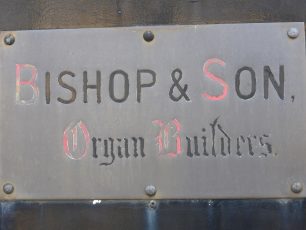
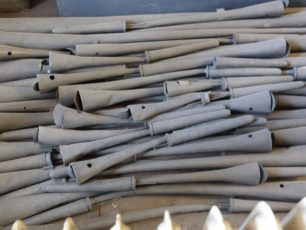
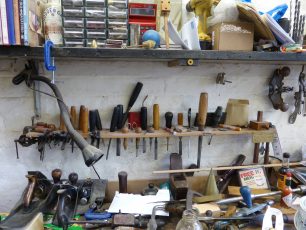
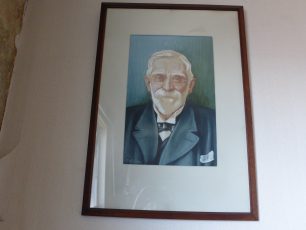
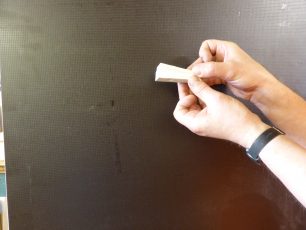
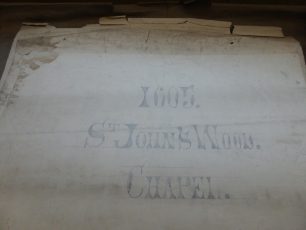
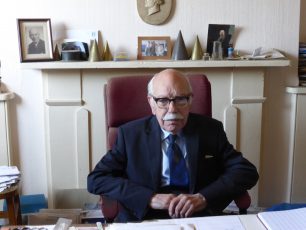
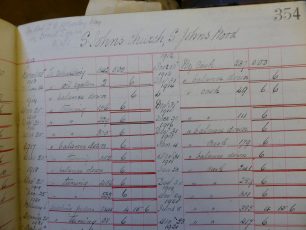
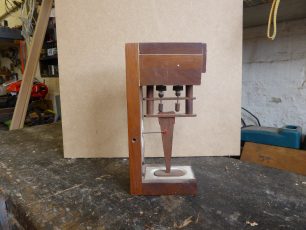
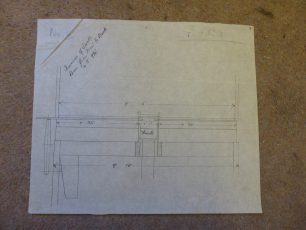
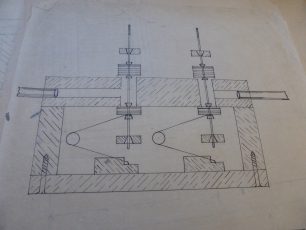
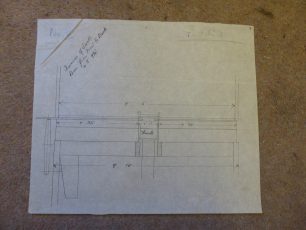
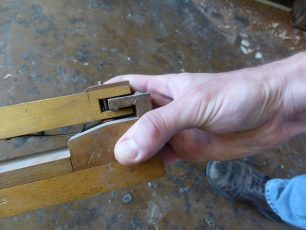
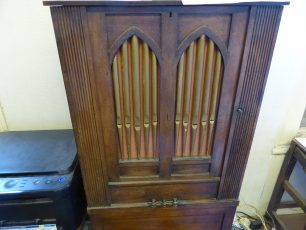



No Comments
Add a comment about this page